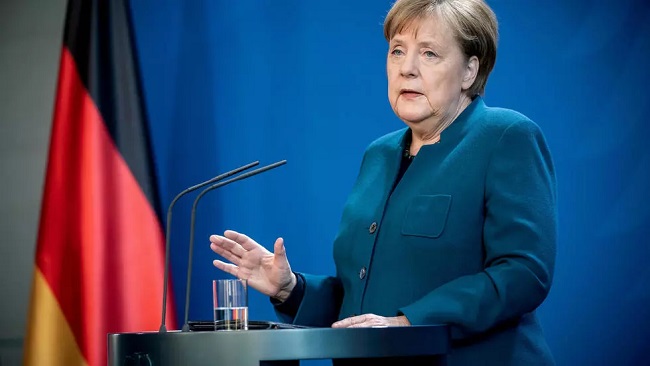Germany extends Covid-19 lockdown, with restrictions gradually lifting
Germany is extending its coronavirus shutdown by three weeks until March 28, but easing some restrictions to allow nonessential stores and other businesses to reopen in areas with relatively low infection rates.
After about nine hours of talks, Chancellor Angela Merkel and the governors of the country’s 16 states agreed Wednesday to measures aimed at balancing concern over the impact of more contagious coronavirus variants with a growing clamor for a return to a more normal life.
The first moves have already been made: many elementary students returned to school last week. And on Monday, hairdressers opened after a 2 ½-month break. Current lockdown rules were set to run through Sunday.
On Wednesday, Merkel and the state governors—who in highly decentralized Germany have the power to impose and lift restrictions—set out a phased plan that allows for some further relaxation of restrictions.
“These should be steps toward opening but at the same time steps that do not set us back,” Merkel told reporters in Berlin. “There are a great many examples in Europe of a dramatic third wave.”
She pledged that “spring 2021 will be different from spring a year ago.”
Regions where infection rates are relatively low, though not as low as previously envisioned, will be able to open nonessential stores, museums and other facilities on a limited basis.
Most stores have been closed nationwide since Dec. 16. Restaurants, bars, sports and leisure facilities have been closed since Nov. 2 and hotels are allowed only to accommodate business travelers.
When they last conferred on Feb. 10, Merkel and the governors set a target of 35 weekly new cases per 100,000 inhabitants before letting small stores, museums and other businesses reopen. The aim is to enable reliable contact-tracing.
But reaching that target soon appeared increasingly unrealistic as cases of the more contagious variant first detected in Britain increased, with overall infections creeping slightly higher. The cases-per-week number, which peaked at nearly 200 per 100,000 inhabitants just before Christmas, has been stalled above 60 in recent days.
Wednesday’s decisions opened up the possibility of reopening more businesses at various stages above the 35 target, though they included an “emergency brake” mechanism that would see the restrictions now in place reimposed if the infection level if the weekly infection level exceeds 100 per 100,000 residents on three consecutive days.
On Wednesday, the Robert Koch Institute, Germany’s national disease control center, said an analysis of nearly 25,000 samples found that the British variant accounted for about 46% of cases last week — up from 22% two weeks earlier.
Germany has seen the number of deaths from COVID-19 and people in intensive care decline in recent weeks.
But it has been struggling to ramp up its vaccination drive, which has drawn widespread criticism for being too slow, even as the supply of vaccines improves. German lawmakers have ditched plans for hefty fines for people who skip the vaccine queue.
As of Tuesday, 5.3% of the population had been given a first vaccine dose and 2.7% had received two doses.
The disease control center said Wednesday that 9,019 new coronavirus cases were reported over the past 24 hours, bringing the total so far to 2.46 million. There were another 418 deaths in the nation of 83 million, raising Germany’s death toll to 70,881.
Source: AP





